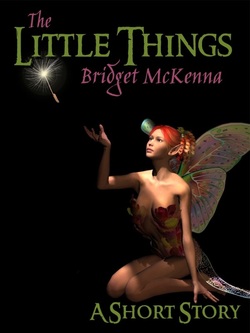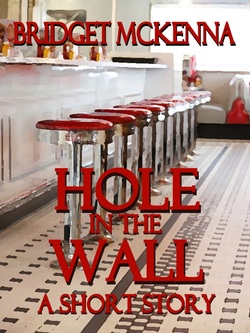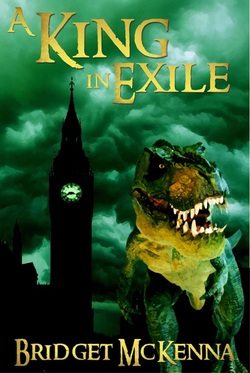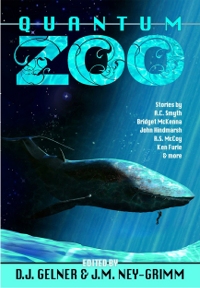
Sound like something you might be interested in? Get on over to Occupy Publishing and check it out! I'll return with more publishing news, and a new short story, in a couple of days.
 Over on Occupy Publishing, I've posted an article on what writers—indie or otherwise—need to know about editing, a list of recent Internet articles on editing, and a document that will help writers edit themselves more effectively. Sound like something you might be interested in? Get on over to Occupy Publishing and check it out! I'll return with more publishing news, and a new short story, in a couple of days.
0 Comments
 Today I re-published “The Little Things,” a short story originally published in the 1993 anniversary edition of The Magazine of Fantasy & Science Fiction, which at that time was edited by Kristine Kathryn Rusch. In keeping with my policy of providing the “writing-of” afterword to each republished story here, what follows is my latest afterword, “Writing The Little Things.” I hope you enjoy it, and of course if it makes you want to spend 99c to buy the story, so much the better. Writing "The Little Things" Many years ago I first read about the annual red crab migration on Christmas Island. It was in National Geographic, accompanied by some amazing photos of roads and streets and the stairs of public buildings entirely covered in masses of fortunately vegetarian crabs, while the islanders went about their daily business, albeit carefully. Christmas Island is a little speck in the Indian Ocean northwest of Australia, just 135 square kilometers in area. For comparison, Seattle—where I live—is a slightly larger speck with an area barely more than 150 square km. Fifty million or so Christmas Island red crabs, Gecarcoidea natalis, live on Christmas Island under the cover of the forest canopy. For ten months of any year, they are seldom seen unless one is looking for them. But every year from October through November (and sometimes into December), every able-bodied red crab on the island leaves its forest home and heads for the sea to mate. Over half of the island is an Australian national park, the crabs are protected by law, and many roads are closed to vehicular traffic during the migration. That said, an estimated two million crabs a year are squashed by automobiles, and you may be sure many are eagerly snapped up by other types of predators, too. Tens of millions eventually reach their mating coves at the ocean’s edge, where each female discharges about 100,000 eggs into the sea. The survivors will later form a millions-strong reverse migration back into the forest. So that’s the part about the crabs. Look ’em up. There are videos. It’s amazing. This is the part about the fairies. In 1990, Walt Disney re-released its 1940 animated film Fantasia to 500 theaters across the U.S. I remember sitting in the darkened cinema watching a sequence early in the film set to Tchaikovsky’s “Dance of the Sugar Plum Fairy.” In this part of the film, tiny, slender winged creatures dance through the air, sprinkle flowers with dew, and generally flit about looking charming. It really is quite a lovely bit of Disney animation. My favorite part is where the fairies bedew a spider’s web and make it sparkle like some fine lady’s gems. I have watched this film since, and haven’t yet been able to pinpoint where what I saw might have reminded me of the red crab migration, and made me think “Yeah, but they wouldn’t look so cute if there were about fifty million of them.” My mind began to do that thing writers’ minds do, and by the time I arrived home, I had begun to imagine a fairy migration to rival anything Christmas Island had ever seen. Only instead of an expected annual event, this one would be the entirely unexpected revival of an endangered species, and the affected people would be entirely unprepared for the complete and utter invasion of another life form into their normally uneventful lives. And so grew the sleepy village of Morgan’s Glen, where fairies exist in picture-books, and in the fond memories of old people like Miranda Morgan, who actually saw one when she was six or seven. And into that first day of seeing fairies in the world again came Martin Price, Miss Morgan’s gentle gardener and driver, who has never done anything more violent than to set ladybugs out to eat aphids. Cook and Willamena settled into the basement kitchen to round out Miss Morgan’s minimal staff, and Mr. Pennyford and Joey Stanleigh appeared magically when needed to provide a slightly different point of view on the desirability of having fairies around. Writing a story—even when no fairies are involved—is always a sort of magical act. Since the time I wrote “The Little Things,” I have written to order for book and game franchises, and for theme anthologies. That sort of writing can easily seem cut and dried as you begin it, but no matter how a story is called into being, some sort of creative magic arrives at some point and takes over the process. If it did not, you’d end up with a collection of sentences and paragraphs without any real life in them, and no-one—no matter how devoted to the franchise—would care to read it. This story felt magical to me from the opening paragraph through to the last words on the last page. I made some minor revisions for Kris Rusch after sending it to her at Fantasy & Science Fiction, adding the scene where Martin and Miss Morgan discuss her reluctance to reveal the “Morgan family secret” to help the village dig out from under the fairies, and deleting a scene where Miss Morgan appears at a second town council meeting. Kris thought the scene seemed tacked on and unnecessary, and indeed it did. Good editors are worth their weight in anything you’ve got, and she’s among the best. So there you have the story, and the story behind the story. Writing “The Little Things” was one of the most enjoyable experiences I ever had writing a piece of short fiction. I think Martin and the fairies must have done the work, and I had all the fun.  Hole in the Wall Today I put up a corrected version of my short story “Hole in the Wall,” which was originally published in Isaac Asimov’s Science Fiction Magazine in May 1991, edited by Gardner Dozois. As I've been republishing these works of short fiction that appeared in science fiction magazines some years back, I've been writing afterwords that tell something of how I came to write the story. When I was ready to republish this one, I realized the afterword was far too short and contained far too little. So I started over and told more of the story behind the story. In keeping with my recent habit of providing the afterword to each new publication here, in addition to inside the very-reasonably-priced book itself, what follows this paragraph is the afterword to “Hole in the Wall,” which you can read even if you’re not going to shell out 99c, though of course I would never try to stop you from doing that too. Writing Hole in the Wall When I first got the idea for “Hole in the Wall,” I didn’t know what I was going to do with it. I knew the story took place in a diner, and in the diner was a wall with a portal that went somewhere. So I had a setting, but not yet a story. Later I decided the man who ran the diner was called Tomacheski, who was a recent immigrant. Now I had a setting with a character. And there it languished. In those days, or so it seemed to me at the time, some of my ideas became fully-realized stories, and others did not; I had no clue as to why. I was still a bit new to this writing lark, and although I'd made a couple of fiction sales, the whole process seemed more like luck to me than craft. Eventually, luck took me far enough that I could absorb the craft I needed. I met Algis Budrys, who was then the editorial director for the Writers of the Future contest. On the night we met, at a party attended by quite a few starry-eyed wannabe science fiction and fantasy writers, he shared with us the seven-point plot skeleton that he claimed was the inner structure of every story. You would not find it in vignettes or stream-of-consciousness pieces, he said, but whether the author knew it was there or not, it served as the bones of every story with a beginning, a middle, and an end, and knowing how to apply it was an important key to stories that worked. I didn't yet know whether that was true, and I didn’t yet know how basic the structure of narrative is to human consciousness, but I took it on faith. I consciously applied the model to the next story I wrote, and the next, and the next. I sent these stories off to Writers of the Future, in three successive quarters. I received honorable mentions for the first two, which was wonderful encouragement, especially as some of the most amazing writers of the time were judging: Anne McCaffrey, Roger Zelazny, Larry Niven, and Gene Wolfe were among the judges that year. I felt there was a distinct possibility I might be doing something right. I've since found the seven plot structure elements Algis revealed to me that night in every story I've ever examined, no matter how commercial or how high-flown and literary, though many writers will still tell you the structure doesn't exist, and others confuse plot with formula. Algis used to say "Formula is putting Coke™ in a Coke bottle for Coke drinkers. Plot is the structure of the events in your story. Storyline is what happens to your character as a result of those events." Years later, a writer who's won every award I ever lost and a few more rapped my knuckles thoroughly when I wrote an article about seven-point plot structure for a writers' magazine, and warned anyone reading his commentary that I was peddling claptrap. You can see that opinions differ sharply on this subject. So back to the evening in December 1985, when I got a phone call at the bookstore I managed in Redding, California. It was from the WotF contest director, who informed me I had won first prize for the fourth quarter of that year for my story "The Old Organ Trail." We talked for a few minutes while my feet tried in vain to find the floor; he seemed as pleased to be giving the news as I was to be receiving it. After he'd hung up I remember thinking “I must have mis-heard him. He probably said third place.” Fortunately, that was just my insecurity trying to keep me from getting my hopes up. It was first place, and I got a really nice check for the win, and another when Algis bought the story for the annual anthology at an unheard-of word rate for an unknown writer. A few months later, I was invited to a week-long workshop in Taos, New Mexico. This was the first Writers of the Future workshop—a test case to see if the idea would work. The workshop was held in May, 1986. There, four of the greats of science fiction—Frederik Pohl, Gene Wolfe, Jack Williamson, and Algis Budrys himself—did their best to teach eleven new writers (including Dean Wesley Smith and Kristine Kathryn Rusch, whose blogs you should be reading if you don’t already) how to turn an idea into a story, and how to make the story shine once you’ve written it. “First you write it, then you make it good!” was a piece of memorable advice from Fred Pohl that should probably be tattooed on every new writer. As the workshop progressed, and I learned more about the structure of stories, I began to think of the ones I’d begun, then abandoned in old notebooks because I had no idea how to complete them. I had loosely plotted two of them by the time I got home and went looking for those notebooks. "Hole in the Wall" was one of the stories I dug up that year, and eventually finished. Early on in outlining the story (yes, I do outline—no, I don’t always stick to the outline), I was having difficulty bringing the narrative alive. I realized I needed to make a change in the my choice of viewpoint characters. Ladislaw Tomacheski was the hero of my story, but the more I thought about it, the more I felt I needed to tell it from Morton Grimes’ viewpoint. As Tomacheski’s story, it would tell of the triumph of the little guy over a corrupt system which Grimes would personify; potentially interesting and fun, but I felt like I was missing something. Morton Grimes’ story is about a man who's so tied up in his own narrow ideology that he can't recognize good people when he meets them, and never seems to be on the side of the angels in any situation. In the end, he loses his last and best chance to change. As Grimes’ story, “Hole in the Wall” could relate the same basic events with the same humor, but Grimes’ overpowering sense of justification and lack of human understanding would be clearer, and the underlying tragedy would make itself felt. The story felt stronger and more meaningful to me this way. Having made that decision, the writing became much easier; the story had found its voice. Shortly before I sent this story to Gardner Dozois at Asimov’s, I sent him a novelette-length time travel story. He said he thought it was a good story, but was going to turn it down. In general, he said, time travel stories didn’t make a lot of sense to him. I put that one aside, and sent him the very next thing down on my stack, which was…yep…another time travel story. I didn’t realize this until after I’d mailed it, and so resigned myself to getting it back shortly. Fortunately, Gardner liked this one enough to write a check. “Hole in the Wall” appeared in Asimov’s in May 1991, and again in Timegates, (Ace Science Fiction, edited by Gardner Dozois and Jack Dann), in 1997. Thanks Gardner, and thanks Jack, and thanks to all you readers out there.  Get you writer power on! A message from Occupy Publisher's founder...me. For more news, information, community, and awareness, visit Occupy Publishing. You can also Like us on Facebook, follow us on Twitter, and add us on Google +. We won't mind. "Nothing in the world of publishing is what it was just a few years ago. Many, many writers at all different stages of their careers are still either unaware of this, or are banking on everything getting back to normal any day now. It won't. My wish for writers everywhere is that they will write with love and dedication, educate themselves about the realities of publishing, and be aware of how the rapidly-changing environment of their profession affects their career paths. With Occupy Publishing, we hope to be raising awareness, communicating news, and informing anyone who'll listen about the opportunities and realities of publishing in the 21st century. Watch this space for more news, links, opinions, guest blogs, and anything else we can think to include. What would YOU like to see?"  There was once a golden age (by comparison) of publishing, and no, even I am not old enough to have experienced it, but everything I’m about to say is true. In that golden age, there were lots and lots of New York publishers who were not all subsidiaries of even larger publishers who were subsidiaries...well anyway, there were lots of publishers at which toiled lots of acquisitions editors, each with their own tastes and preferences that were expressed in the books they bought. And after an editor bought a book, the sales staff figured out how best to sell it. Yes, the horse actually pulled the cart in those days. Trust me; although it's no longer true, this is the way it happened in that golden age. Editors who Edited, and Books Without Buzz In that golden age, editors at publishing houses (who had worked their way up to that position while learning their craft reading and evaluating slush pile manuscripts) actually got to edit, while administrative tasks and editorial scut-work were handled by people lower down the company totem pole, as they had once been themselves. Publishers weren’t subsidiaries of publically-owned multinational megacorporations and so, lacking stockholders to keep them focused on the bottom line for this quarter, they often thought far, far ahead in terms of developing authors and their careers, and developing sales for an individual book. Years ahead. In those days, strategy trumped panicked reaction to every market fluctuation, and instinct was more a factor than microvariations in book-buying statistics. Books did not spoil on bookstore shelves as quickly as they do now, so a long view could be seen as the best view for many novels, and they were often left to develop word of mouth; “buzz” hadn’t been invented yet, except as it pertained to bees. In those halcyon days, editors and writers often felt connected by a common stake in the success of a project and of a writer’s career. It was editors who nurtured reasonably-good writers into good ones, and good ones into great ones. If Nicole Polizzi had showed up at Simon & Schuster with a great idea for a book, she'd have been shown the door, politely but firmly. If some S&S editor had come up with the idea of hiring a ghostwriter to create a Nicole Polizzi masterpiece, he would have joined her on the pavement. In those distant decades of another century, an editor could find a promising book that was not quite ready for prime time, and dedicate himself to working with the author to make it better. Editors were mostly men in the golden age, but in time salaries would fail to keep up with the world outside publishing, and women would come to dominate the field. Every book went onto the market with expectation and trepidation. Would this one make it? Did they have a bestseller on their hands? That's right, kiddies—there were no manufactured bestsellers, no automatic midlist titles. To be fair, there was also precious little in the way of book-length genre fiction, except for historical novels, but science fiction, romance, and westerns, among other genres, were well-represented in magazines. Yes, Magazines! There were dozens of magazines in those days that published several pieces of short fiction each month (I am NOT making this up!), so that many if not most writers learned their craft and earned their reputations learning to plot and polish for the more demanding short form, then moved on to novels. Others made a living writing nothing but short fiction, writing a western one day, a jungle adventure the next, a spy mystery the day after that. Quite a few magazines were devoted entirely to short fiction, but almost every magazine published some fiction in every issue. America, not yet habituated to television with its endlessly-continuing stories, had a big appetite for short fiction. Editors Editing, Agents Agenting... So while editors were editing books, often taking on authors who were not yet ready for prime time because they believed in their promise for the future, agents were agenting. They did not, at that time, function as the pubishers' first readers. They showed promising books to editors, and represented their clients in contract negotiations. There were many, many fewer of them, and virtually none of them thought of themselves as editors, because there were plenty of those just over town at the publishing companies. Publishing companies had not yet laid off so much of their editorial staff that they could no longer fulfill the function of vetting incoming manuscripts. The conventional wisdom regarding agents was that a writer didn’t need one until he or she was selling books and making "real" money, so writers could submit their work directly to editors, "over the transom." When an editor wanted to buy a book, and was ready to negotiate a contract, he suggested the author retain the services of an agent. Well, the honest ones did, anyway. An unpublished writer with an agent was pretty much unheard of. Instead of stranglehold agency agreements of the type we have now, the agent and author were bound only by the agency clause in the publisher’s contract, and a handshake. When the rights to the book reverted (and they usually did so without tears or threat of lawsuit), the agent’s legal interest in that book was at an end, and until he sold another, he had no legal interest in anything that author might write in the future. Nor did the publisher. Back to the Future So this all happened a long time ago. By the time I was ready to sell a novel, which was a shorter long time ago, it was virtually the stuff of fairy tales. By that time, most editors wouldn’t look at an unagented manuscript, and a new crop of agents who had only lately been employed as lower-echelon editors were the publishers’ new first readers—the gatekeepers’ gatekeepers. They were doing more work, handling more clients, and to no-one’s surprise, starting to charge more money. Many insisted on contracts that went beyond the publishers’ agency clauses in sewing up the author’s freedom of movement. Despite the fact that the agents were not able to put their interests first, most authors would not have dreamed of going against their agents’ wishes for their careers. But we’re writing a new story now about a new golden age, one that came on us so fast that many writers don’t believe it’s actually happening, while others fear it might be, and that might mean the sky is falling. Those writers are still living in the fairy tale that stopped being true before they ever sat down to a keyboard. A New True Story In our new story, writers have a wide range of choices about their careers, and publishers, while sometimes desirable for particular projects, no longer control the only means of distributing books. Agents no longer control access to subsidiary rights such as film and TV deals, foreign language publication, or audiobooks. Writers build their own platforms and publicity campaigns, hire other professionals to do whatever they can’t do themselves to get their books ready to publish, choose their own publication dates and price points. Smart writers weigh their options, make their own career decisions, and walk away from bad contracts. When they deal with publishers, they insist on being treated with the respect they deserve as creators of the content that drives the business. When they publish their own works, they enter into it as entrepreneurs who learn from the past, live in the present, and keep a flexible future in front of them. Tempted to be nostalgic for that golden past of publishing? Don’t bother. Any age takes on its coloration from the lenses we use to view it, and our future as writers is more golden than ever before if we want it to be. I like this new story best of all, and as we go into a new and promising year, I’d like to invite anyone who fancies it to make it your story, too. |
Free e-Book
 Quantum Zoo Anthology Quantum Zoo Anthology
Essential Blogs for Writers
Kristine Kathryn Rusch Dean Wesley Smith The Passive Voice The Book Designer A Newbie's Guide to Publishing David Gaughran A Brain Scientist's Take on Writing J W Manus Ryan Casey Friends, Romans, etc. Marti McKenna Douglas Herring, Illustrator R.K. MacPherson's The Raven's Nest Archives
January 2015
Categories
All
|
|
|
This site last updated 15 November 2015
|
|
